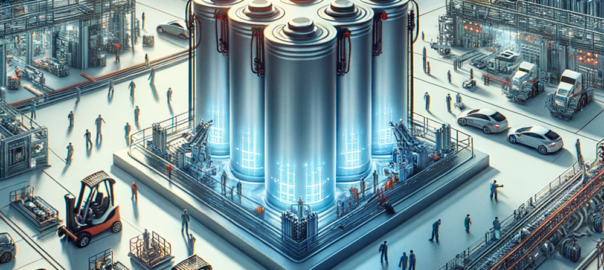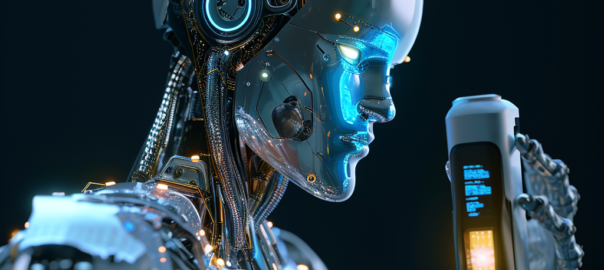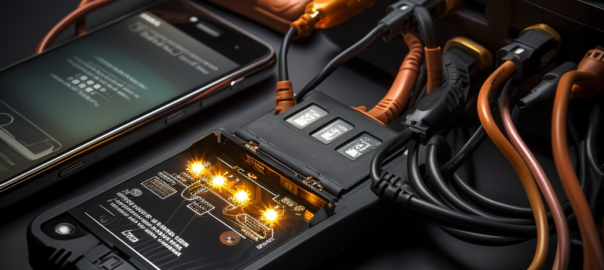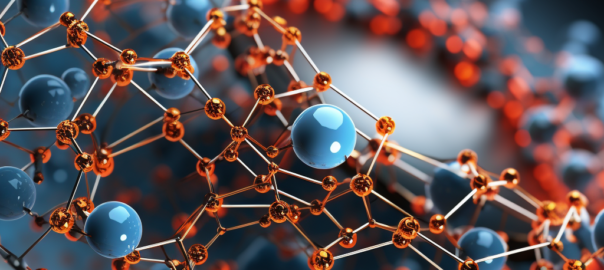In today’s energy-conscious landscape, the quest for efficient and sustainable energy storage has become paramount. The world seeks alternatives to traditional power sources, and at the forefront of this shift stands the lithium metal (Li-metal) battery. A promising technology, its true potential remains bottlenecked due to several challenges. A notable area of concern, and opportunity, is the separator coating within these batteries.
The importance of a separator in a battery cannot be overstated. Acting as a protective barrier, it ensures the safe operation of the battery by preventing internal short circuits. However, when it comes to Li-metal batteries, this separator demands more than just a basic design—it necessitates a specialized coating to handle the unique characteristics of lithium metal.
This is where state-of-the-art separator coating facilities come into play. With their help, the mass adoption of Li-metal batteries may be just over the horizon. This article delves deep into the role and significance of these facilities, the challenges they address, and the brighter, energy-efficient future they promise.
Contents
- 1 Background: What are Li-Metal Batteries?
- 2 The Role of Separator Coating in Li-Metal Batteries
- 3 Benefits of Speedy Adoption: A Look at Energy Storage and Efficiency
- 4 Challenges Faced in Commercializing Li-Metal Batteries
- 5 Advancements in Separator Coating Facilities
- 6 Real-world Implications for Cleaner Energy and Sustainable Transportation
- 7 Conclusion and Future Prospects
Background: What are Li-Metal Batteries?
Lithium-ion batteries have long held sway in the realm of energy storage, powering everything from smartphones to electric vehicles. Yet, for all their prowess, the search for a successor is driven by the need for even greater energy density and efficiency. Enter the Li-metal battery.
A Li-metal battery, as the name suggests, uses pure lithium metal as its anode. This is a significant shift from the graphite anodes found in traditional lithium-ion cells. The primary allure of lithium as a metal anode lies in its high theoretical specific capacity, which stands at a staggering 3860 mAh/g, nearly ten times that of graphite.
However, this impressive capacity isn’t the only thing that sets Li-metal batteries apart. They also possess the potential for a much higher energy density, which translates to longer-lasting batteries. For consumers, this could mean smartphones that need charging just once a week, or electric vehicles that rival or even surpass the range of their gasoline counterparts.
Yet, with these advancements come challenges. The dendritic growth of lithium during charging poses a risk. These dendrites can pierce the separator, leading to short circuits and, in the worst-case scenarios, battery fires. The industry’s solution? A more robust and specially coated separator, which is where the emphasis on separator coating facilities emerges.
The Role of Separator Coating in Li-Metal Batteries
At the heart of every Li-metal battery lies its separator, a crucial component that stands between the anode and the cathode. While its primary role is to prevent direct contact between these two, thereby averting short circuits, it also facilitates the flow of ions between the anode and cathode, essential for the battery’s operation.
In Li-metal batteries, the separator assumes an even more vital role due to the challenges presented by lithium’s dendritic growth. To combat this, the separators are often coated with a special material designed to inhibit or reduce dendrite formation. These coatings not only provide an added layer of safety but can also enhance the battery’s overall performance.
Advanced separator coating facilities are pivotal in this regard. By employing cutting-edge techniques and materials, these facilities can produce separators that are tailor-made for Li-metal batteries, ensuring they operate safely and efficiently.
Benefits of Speedy Adoption: A Look at Energy Storage and Efficiency
The global thrust towards renewable energy sources and sustainable transportation requires a matching evolution in energy storage technologies. Li-metal batteries, with their enhanced energy densities and efficiencies, could be the linchpin in this transformative era.
- Greater Energy Density: As previously mentioned, Li-metal batteries boast a potential for vastly superior energy density compared to their Li-ion counterparts. This not only translates to longer battery life for everyday devices but also impacts larger applications. For example, electric vehicles (EVs) with Li-metal batteries could see drastically increased ranges, making long road trips on a single charge a feasible reality.
- Faster Charging Times: One of the sought-after benefits of Li-metal technology is reduced charging times. For the consumer, this means less time tethered to an outlet and more freedom in mobility, a particular boon for the adoption of EVs.
- Potential Cost Savings: With advancements in separator coating technologies and the scalability of production, Li-metal batteries could see a reduction in manufacturing costs. This could make green technologies, such as EVs, more accessible to a broader swath of the population.
- Reduced Carbon Footprint: Improved battery efficiency directly correlates with reduced energy wastage. As such, the widespread adoption of Li-metal batteries could result in a substantial decrease in global carbon emissions, especially if paired with renewable energy sources.
Challenges Faced in Commercializing Li-Metal Batteries
No technological advancement comes without its hurdles, and Li-metal batteries are no exception.
- Dendritic Growth: As touched upon earlier, the formation of lithium dendrites is a significant safety concern. These growths can compromise the integrity of the separator and lead to potential short circuits or even fires.
- Battery Lifespan: The cycle life of a battery, or how many times it can be charged and discharged without significant degradation, is crucial. Current Li-metal batteries face challenges in maintaining their performance over extended cycles.
- Scalability: Mass production is a crucial step for any technology to become widely adopted. Ensuring that Li-metal batteries can be produced on a large scale without compromising on their quality is a challenge that the industry currently grapples with.
- Research & Development Costs: The road to perfecting Li-metal technology demands significant investment in research and development. Recovering these costs without skyrocketing the price of the end product is a delicate balance to strike.
However, it’s worth noting that many of these challenges are being actively addressed. The advancements in separator coating facilities, for instance, are a direct response to the issue of dendritic growth and battery safety.
Advancements in Separator Coating Facilities
Separator coating facilities play an instrumental role in propelling Li-metal batteries towards mainstream adoption. Here’s a closer look at the innovations and advancements these facilities bring to the table:
- Precision Coating: Modern facilities employ highly precise coating techniques, ensuring uniform layers that optimize battery performance and safety. Such precision reduces the risk of dendrite penetration and prolongs battery lifespan.
- Advanced Materials: Research into new materials for separator coatings is ongoing. These materials aim to be more resilient against dendrite formation, more conductive for ions, and more efficient in terms of overall battery performance.
- Scalable Production: As the demand for Li-metal batteries grows, so does the need for mass production of separators. Advanced separator coating facilities are investing in technologies that allow for large-scale production without compromising on the quality of the separators.
- Eco-friendly Processes: Sustainability is not just about the end product but also the processes involved in its creation. Modern facilities are pioneering eco-friendly production methods, minimizing waste and reducing their carbon footprint.
- Continuous Research and Development: The field of battery technology is dynamic, with new discoveries made regularly. Leading separator coating facilities maintain dedicated R&D wings, ensuring they stay abreast of the latest advancements and integrate them into their processes.
Real-world Implications for Cleaner Energy and Sustainable Transportation
The potential of Li-metal batteries extends beyond just longer-lasting smartphones or laptops. The broader implications of their widespread adoption are profound:
- Revolutionizing Electric Vehicles (EVs): The automotive industry is on the cusp of an EV revolution. Li-metal batteries, with their superior energy densities, can be the driving force behind EVs that match or even outperform traditional vehicles in terms of range, efficiency, and cost.
- Grid Storage Solutions: Renewable energy sources like solar and wind are intermittent. Li-metal batteries could offer efficient, large-scale energy storage solutions, ensuring a continuous power supply even when the sun doesn’t shine or the wind doesn’t blow.
- Portable Electronics: A more extended battery life coupled with faster charging times can redefine our relationship with our gadgets, offering true mobility without the constant worry of battery depletion.
- Environmental Impact: With cleaner energy storage solutions, the global carbon footprint can see a significant reduction, aiding efforts to combat climate change.
Conclusion and Future Prospects
The journey of Li-metal batteries, from conception to potential mainstream adoption, is emblematic of the larger narrative of technological evolution. While challenges persist, the relentless march of progress, embodied by advancements in separator coating facilities, promises a future where clean, efficient, and sustainable energy storage isn’t just a possibility but a reality.
The world stands on the brink of an energy revolution, and Li-metal batteries, with their myriad advantages, are poised to lead the charge. As research continues and technology refines, the day might not be far when the benefits of these batteries become an integral part of our everyday lives.










